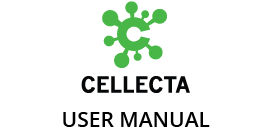- For larger bulk tissue, blood, or cell samples, follow the guidelines below to isolate, quantify, and QC total RNA. Generally, deep, quantitative expression profiling requires using 10-50 ng of total RNA isolated from whole blood, PBMC, tissue, or cell samples. Due to high sensitivity and specificity, the hGW19K assay can also be used for expression profiling from 1-5 ng RNA with reduced sensitivity and reproducibility in profiling of low abundant transcripts. Use the appropriate method to isolate total RNA. We recommend the following RNA isolation kits.
- Whole blood: we recommend using the Tempus (Thermo Fisher) or PAXgene (QIAGEN) for total RNA isolation. Based on our experience, the collection of 3 ml of whole blood in Tempus RNA Blood Tubes followed by RNA isolation using the Tempus Spin RNA Isolation kit provides the most simple and reliable protocol for purification of high-quality (DNA-free) RNA from whole blood.
- PBMC, buffy coat, or fresh/frozen tissue and cells: for more than 50,000 cells, we recommend using the QIAGEN RNeasy Micro/Mini Plus Kit for total RNA isolation.
- FFPE tissue: we recommend using the Thermo Fisher RecoverAll™ Total Nucleic Acid Isolation Kit for FFPE (Cat.# AM1975). With FFPE, the yield and quality of isolated RNA can vary significantly depending on the age and method used to fix the sample. It is critical to assess the quality of the RNA before proceeding with the DriverMap EXP protocol.
- Ensure the extracted RNA is free of almost all DNA.
- Small amounts of DNA (i.e, <5% genomic DNA contamination) do not interfere with the assay. With the Tempus and RNeasy Plus RNA Kits, a separate DNase treatment is not necessary. When using other RNA isolation protocols, a separate DNase treatment of RNA samples is recommended before starting the procedure. Follow the DNase treatment instructions in the manufacturer's RNA isolation kit manual. In the DirectCell protocol, DNase treatment is not required.
- Quantify total RNA with the Thermo Fisher NanoDrop (or equivalent), and confirm the integrity of RNA in each sample before starting the assay by one of the following methods:
- Determine the RIN number using the Agilent Bioanalyzer and Agilent RNA 6000 Pico Kit (Cat.# 5067-1511).
- Determine the RIN number using the Agilent Fragment Analyzer and High Sensitivity RNA Analysis Kit (Cat.# DNF-472-1000).
- Using a gel imager, calculate the 28S:18S rRNA ratio after running the RNA samples on an agarose gel.
The RIN number for your RNA samples should be no less than 5. If you are using FFPE RNA samples, you should additionally check the samples to ensure that a significant level (at least 20%) of RNA fragments is larger than 300 nt.
Last modified:
1 August 2024
Need more help with this?
Contact Us

